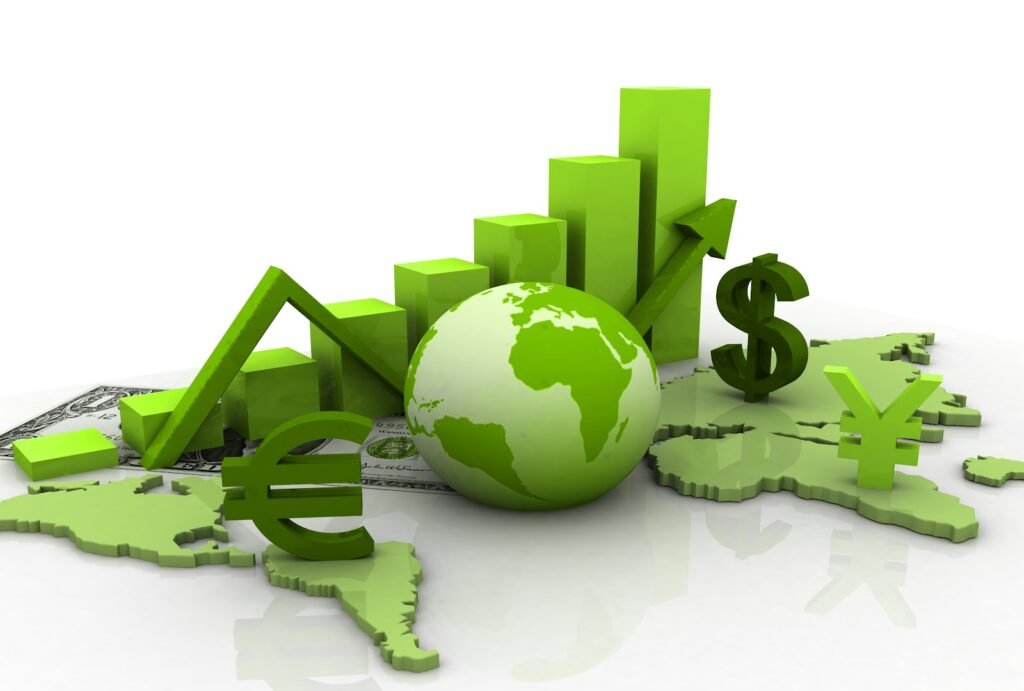An investigation by Shadowgroup.
To set up their investment funds, asset-management companies such as Eurizon (a subsidiary of Intesa SanPaolo), are using indexes that regularly include fossil-fuel companies. Exploiting loopholes in European regulations, they can thus sell “green” funds that in reality are anything but. The solution? Tougher rules.
When creating their funds, asset-management firms make use of reference indices of companies, known as benchmarks. These indices are provided by rating agencies, and often do not take into account any environmental or social factors for the companies featured in the index. On the contrary: they regularly include oil and gas companies, which are highly profitable.

Europe’s Sustainable Finance Disclosure Regulation (SFDR) contains ambiguities that lend themselves to stretched interpretations. Eurizon, an asset-management subsidiary of Intesa SanPaolo, thus manages to propose “green” funds that have precious little green about them. It does this by using existing benchmark indices of companies which bear scant relation to environmental conservation or sustainability. This despite the fact that Eurizon – which manages client assets worth €381 billion – claims (in its sustainability report) to believe in a “financial humanism based on respect, responsibility, and awareness of one’s own qualities”. It turns out the scheme used by Eurizon is common among asset managers. Let us go through it step by step.
What are benchmark indices for?
How do you assess the general performance of a market – e.g. wind energy – quickly and easily? By compiling a benchmark index of that market, in which the various turbine manufacturers are present, with different weights. The larger companies will have a higher weight in the index and the smaller ones a lower weight. So if the profits of the larger companies increase, the index will show a higher growth value, while the performance of the smaller companies will have less influence on the value of the index.
More : How “green” investments are financing Big Carbon
An asset-management company that wants to build a fund that invests in the wind-energy market can therefore base the fund on a benchmark index that already contains a list of companies operating in the sector. Fund management is said to be “active” when the manager includes or excludes certain companies from the portfolio, according to his or her own criteria.
For a fund that wants to target firms with an “ESG” (environmental, social, and corporate governance) objective, one would expect to see an index containing companies operating in wind power or other such sectors with a positive environmental impact, or perhaps “de-carbonised” indices (which give more weight to less or non-polluting companies).
Eurizon adopts a different strategy. In the funds we analysed, it uses indices based on the oil and gas market to build its so-called “green” funds. Those indices include, in addition to socially and environmentally virtuous companies (as claimed by Eurizon), fossil-energy giants such as Eni, Enel, Repsol, Chevron, TotalEnergies, BP and Shell.
“These companies have an interest in being part of the portfolio because this way they will receive the increased funding usually attracted by funds classified as Article 8 or 9 [of the SFDR, that regulates ‘green’ financial products]. If they are in such funds, they receive more investment,” explains Fabio Moliterni, climate and ethical-finance specialist for the financial company Etica SGR.
The SFDR imposes transparency criteria that asset managers and financial advisors must meet, as we explained in part one of our investigation. It distinguishes sustainable investments into two categories: those that merely promote “environmental and/or social characteristics” (Article 8), known in the jargon as “light green”; and those that must be truly “sustainable products” meeting more stringent criteria (Article 9), known as “dark green” (see our article).
How investments in Big Oil become (fake) green
Consider, for example, the fund “Eurizon Energy and Raw Materials”. This investment vehicle is actively managed using the following indices: 50 percent MSCI World Energy; 45 percent MSCI World Materials and 5 percent Bloomberg Euro Treasury Bills. None of these indices are linked to ESG methodologies, as MSCI and Bloomberg themselves declare. MSCI is the rating agency that maintains 95 percent of the indices used by Eurizon to build its funds.
In its annual report Eurizon confirms that “no benchmark index has been designated for the pursuit of environmental/social product characteristics”. Instead, Eurizon has established its own “green” index, thereby freeing itself from the specific requirements of the European Securities and Markets Authority (ESMA). This way it does not have to explain to investors how its benchmark indices guarantee that its fund pursues “environmental and social characteristics” (Article 8 of the SFDR).
